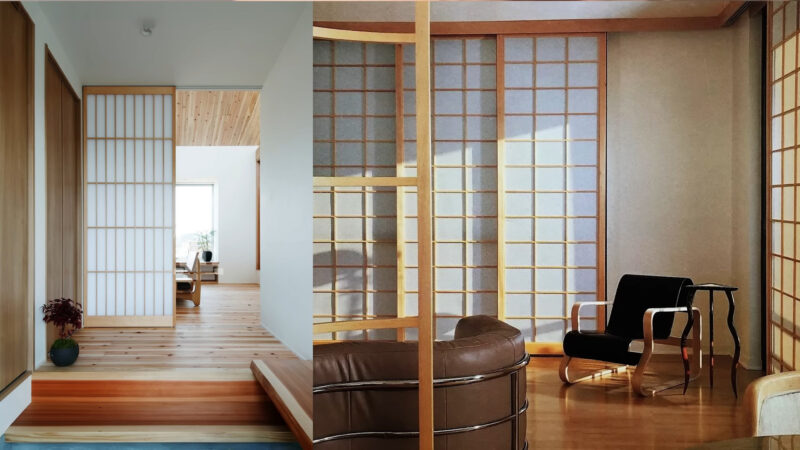The world of home design is ever-evolving, with trends that come and go. However, wood furniture has remained a timeless classic, adapting and transforming with the times.
I get you through the latest trends in furniture, offering insights and inspiration for homeowners, designers, and woodwork enthusiasts alike. Whether you’re looking to revamp your living space or simply curious about the latest in wood furniture design, this guide is for you.
The Resurgence of Vintage Styles
The past has a way of making a comeback, and in the realm of wood furniture, vintage styles are making a significant resurgence. These designs, reminiscent of bygone eras, bring a touch of nostalgia and charm to modern homes.
Mid-Century Modern
Mid-century modern design, which originated in the mid-20th century, is characterized by its clean lines, functional forms, and organic shapes. This style emphasizes the natural beauty of wood, often using teak, walnut, or oak.
Today, mid-century modern pieces are sought after not just for their aesthetic appeal but also for their durability and craftsmanship. Whether it’s a sleek coffee table or a sculptural chair, these pieces add a touch of elegance to any space.
Art Deco Influences
The Art Deco movement, which peaked in the 1920s and 1930s, is known for its lavish ornamentation and geometric patterns. In wood furniture, this translates to intricate inlays, bold curves, and the use of rich woods like mahogany and ebony.
Modern designers are blending Art Deco elements with contemporary aesthetics, resulting in pieces that are both opulent and functional.
Sustainable and Eco-Friendly Choices
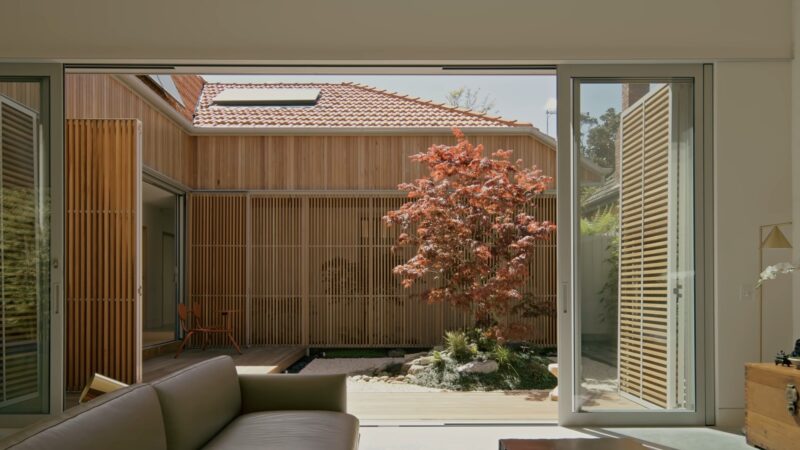
With growing awareness about environmental issues, there’s a heightened emphasis on sustainability in the world of wood furniture. Consumers are now more discerning, seeking out pieces that are not only beautiful but also eco-friendly.
Reclaimed
Reclaimed wood, sourced from old barns, factories, or warehouses, is a popular choice for furniture makers. Not only does it have a rich history and character, but using reclaimed also reduces the demand for newly harvested wood, making it an eco-friendly option.
Furniture made from reclaimed wood often features:
- Unique textures and patterns
- Natural imperfections, add to its charm
- A story behind each piece, making it truly one-of-a-kind
Bamboo: The Sustainable Alternative
Bamboo, often dubbed the “green steel” of the 21st century, is fast becoming a favorite among designers and homeowners. It’s not technically wood but grass, yet it’s incredibly strong and durable. Some advantages of bamboo furniture include:
- Rapid growth rate, making it highly renewable
- Natural resistance to pests and fungi
- Versatility in design, from sleek modern pieces to traditional Asian-inspired designs
Multifunctional and Modular Designs
In today’s fast-paced world, where living spaces are often limited, there’s a growing demand for furniture that’s both stylish and functional. Enter multifunctional and modular wood furniture, which offers flexibility without compromising on aesthetics.
Convertible Furniture
Convertible furniture, such as sofa beds or extendable dining tables, is a boon for those with space constraints. These pieces can easily transition from one function to another, making them ideal for small apartments or multipurpose rooms.
Key features of convertible wood furniture include:
- Innovative mechanisms for easy transformation
- Space-saving designs without sacrificing comfort
- A blend of aesthetics and utility, catering to modern lifestyles
Modular Shelving and Storage
Modular shelving systems, made of wood, allow homeowners to customize their storage solutions based on their needs. These units can be expanded, reduced, or reconfigured, offering a dynamic approach to storage. Highlights of modular wood shelving include:
- Interchangeable components for personalized setups
- A mix of open and closed storage options
- A balance of form and function, ensuring that storage doesn’t come at the expense of style
Natural Finishes and Raw Beauty
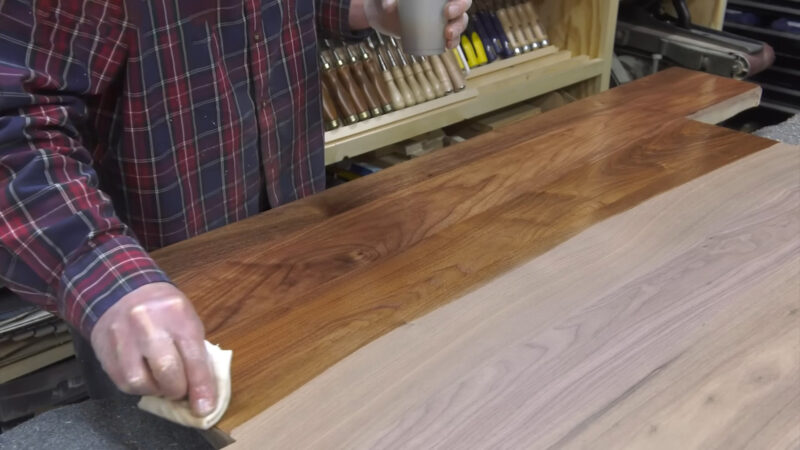
There’s a growing appreciation for the innate beauty of wood in its most natural form. Homeowners and designers alike are gravitating towards finishes that highlight the raw, unadulterated charm of timber.
Live Edge Designs
Live edge furniture retains the natural contours of the tree, making each piece distinct and unique. Often seen in tables, benches, and countertops, live edge designs celebrate the imperfections and irregularities.
These pieces:
- Serve as a focal point in any room
- Showcase the wood’s grain, knots, and natural variations
- Offer a rustic yet refined aesthetic, bridging the gap between nature and craftsmanship
Matte and Satin Finishes
Glossy finishes are taking a backseat to matte and satin finishes, which offer a more understated and contemporary look. These finishes:
- Enhance the wood’s texture without adding shine
- Are more resistant to fingerprints and smudges
- Provide a smooth, tactile experience, adding to the sensory appeal of the furniture
Mixing Materials and Textures
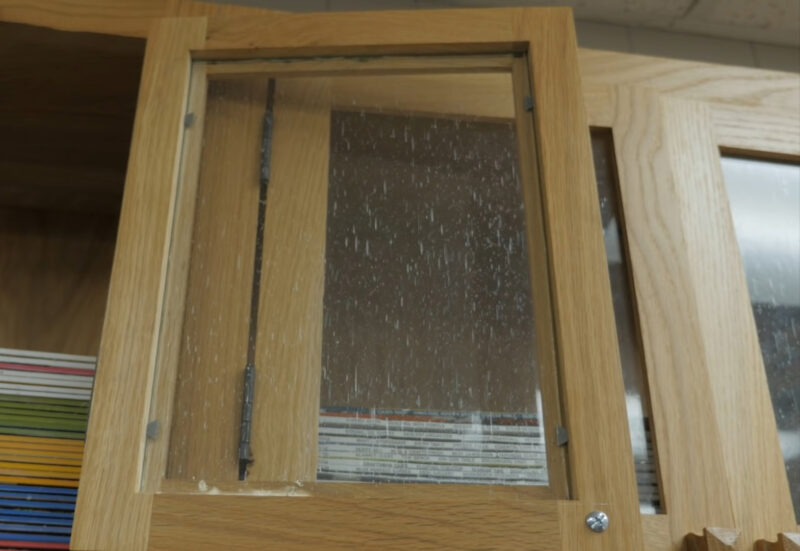
Wood, with its versatility, pairs beautifully with a range of materials, leading to innovative and eclectic designs that cater to diverse tastes.
Metal Combinations
The warmth of the wood combined with the industrial appeal of metal results in furniture that’s both chic and sturdy. Popular in both urban lofts and rustic homes, these combinations:
- Offer a balanced look, with the softness of offsetting the rigidity of metal
- Are durable and long lasting, making them ideal for high-traffic areas
- Can be customized with different types of wood and metal finishes to suit various decor styles
Wood and Glass Fusion
Wood and glass furniture, especially in tables and display cabinets, exudes elegance and sophistication. These designs:
- Allow for a visual lightness, making spaces appear larger
- Showcase the beauty of both materials, with the transparency of glass highlighting the wood’s grain
- Are versatile, fitting seamlessly into both modern and traditional interiors
Geometric and Abstract Patterns
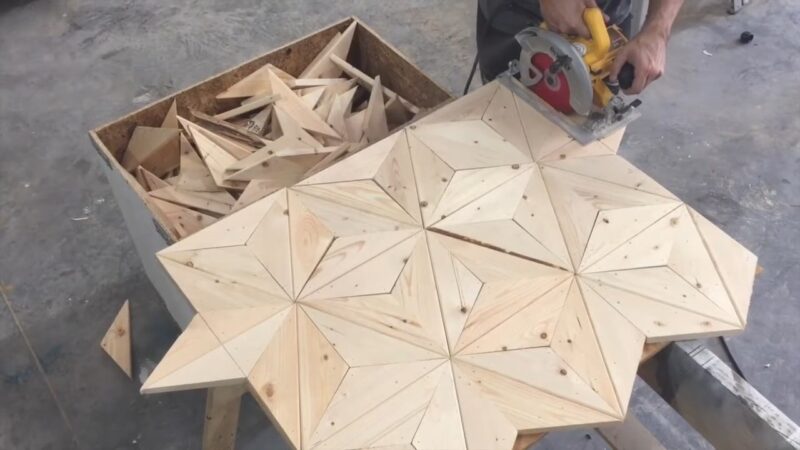
Moving away from traditional designs, there’s a surge in interest in furniture that incorporates geometric and abstract patterns, making them true statement pieces.
Inlaid Patterns
Inlay work involves embedding different materials or types into a wooden surface to create patterns or images. Modern inlays:
- Use a mix of woods, metals, or even stones for a contrasting effect
- Range from simple geometric shapes to intricate, mosaic-like designs
- Add a touch of luxury and craftsmanship to any piece
Carved Abstract Designs
Carving has always been a significant aspect of woodwork. However, contemporary carvings lean more towards abstract and fluid designs rather than traditional motifs.
These carvings:
- Are often inspired by nature, waves, or free-form patterns
- Add depth and dimension to flat surfaces
- Transform ordinary furniture into works of art
FAQ
What types of wood are most popular in contemporary furniture design?
While many types of wood are used, some of the most popular include oak, walnut, teak, cherry, and maple. Each has its unique grain, color, and durability, making them favorites among designers.
How can I ensure the longevity of my furniture?
Regular maintenance, such as dusting, using coasters, avoiding direct sunlight, and using wood-specific cleaners, can help prolong the life of your wood furniture.
Is solid furniture better than veneered furniture?
Both have their advantages. Solid wood is durable and can be refinished multiple times, while veneered furniture can offer a high-end look at a more affordable price point. It depends on your preference and budget.
How can I identify genuine wood from faux wood?
Genuine wood has a distinct grain pattern and may have natural imperfections. Tapping on it produces a solid sound, whereas faux wood, like particleboard, may sound hollow.
Are there any wood alternatives that mimic its look and feel?
Yes, there are several materials like MDF (Medium Density Fiberboard), particleboard, and certain laminates that mimic the look of wood but may not offer the same durability.
How does humidity affect wood furniture?
Excessive humidity can cause wood to swell, while low humidity can make it dry out and crack. It’s essential to maintain a balanced environment to keep wood furniture in optimal condition.
Final Words
Wood furniture, with its timeless appeal and versatility, has always been a favorite in home design. As trends evolve, the essence of wood remains constant, offering warmth, durability, and a connection to nature.
Whether you’re a seasoned designer or a homeowner starting your design journey, understanding the nuances of wood furniture can help you make informed choices that stand the test of time. If you live near a park or forest, constructing a small wooden shelter for wildlife can provide a safe haven for various creatures.
Depending on the design and size, these houses can accommodate birds, squirrels, hedgehogs, and even bats.
